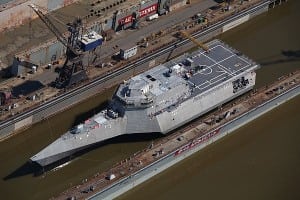
The Government Accountability Office (GAO) denied an Austal USA protest against the winning bid of Huntington Ingalls Industries [HII] for Littoral Combat Ship (LCS) planning yard services, the office said on Tuesday. GAO decided against Austal on Aug. 28, finding no basis to sustain the protest, but published the decision on Tuesday. The report revealed a key factor in the Navy's decision was how it measured the degree to which Austal relied on several subcontractors. In May Austal filed the…

 By
By 











